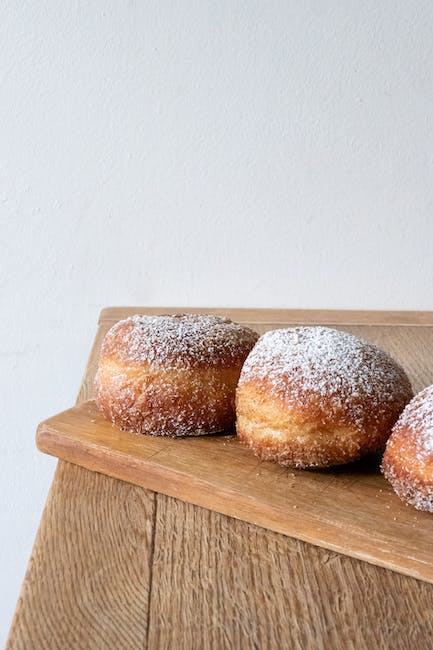Why Did People Wear Powdered Wigs

Powdered wigs first became popular in Europe during the late 17th century and were worn by both men and women of all social classes. The wigs were a status symbol; they suggested wealth, sophistication, and nobility. They were also used to cover up the wearer’s baldness or gray hair. In addition to being a fashion statement, powdered wigs also had a practical purpose—they kept the wearer’s head warm in cold weather. As the trend spread across Europe, powdered wigs became more elaborate and extravagant.
When Did People Start Wearing Powdered Wigs?
Powdered wigs have been popular among European aristocracy since the 17th century. During this time, Louis XIV of France was seen as a trendsetter of fashion and style, often wearing his famous powdered wig to court. The style quickly spread throughout Europe and became a sign of wealth and power. As the popularity of powdered wigs grew, they were worn by men and women of all social classes, from dukes and earls to merchants and tradesmen.
The custom of wearing powdered wigs continued until the end of the 18th century, when it gradually began to die out in favor of more natural hairstyles. By the early 19th century, powdered wigs had become mainly a fashion accessory for special occasions, such as religious services or formal events. They were still seen occasionally in public life, such as during court proceedings or political speeches. However, they had largely been replaced by natural hairstyles as everyday attire.
Today, powdered wigs are still worn on special occasions in some parts of the world. They remain a symbol of wealth and power for those who choose to wear them but are no longer a common part of everyday dress.
What Was the Significance of Powdered Wigs?
Powdered wigs, also known as perukes, were a popular fashion accessory among Europeans during the 17th and 18th centuries. At the time, they were seen as a sign of wealth and status. The higher classes wore wigs made from human hair, while those of lower social status wore wigs made from animal fur. Powdered wigs were often adorned with ribbons or feathers to add to their ornate appearance. They also served a practical purpose, as they were believed to keep the wearer’s head warm and protect them from illness.
In addition to being fashionable, powdered wigs also had symbolic significance. In France, for example, they were associated with justice and judicial authority. French judges often donned powdered wigs when presiding over cases, and even today this tradition is still observed in some courts. In England, powdered wigs were worn by members of the British parliament as a sign of respect.
Powdered wigs eventually went out of fashion in the 19th century but remain an important symbol in many cultures today. They are still used in some judicial systems and have become a popular accessory in fashion shows and costume parties all over the world. Powdered wigs are a reminder of how fashion has evolved over time and continue to be an important part of our cultural history.
Powdered Wigs
Powdered wigs were a popular fashion item during the 1700s in Europe. These wigs were made from human hair, which was usually sourced from France or Germany. The hair would then be sewn onto a canvas base and shaped into various styles. The wig was then powdered with a mix of flour, starch, and scented powder to give it an extra shine. This combination of ingredients was often referred to as “pomatum” or “pomade”. The powder would also help keep the wig in place and absorb sweat and oil from the wearer’s scalp. Finally, the wig would be finished off with ribbons or other decorations to complete the look.
Powdered wigs were a symbol of wealth and status during this time period, so they had to be made with great care. They were often very expensive, so many people opted for cheaper alternatives such as false hairpieces or even just shaving their heads. However, those who could afford them wanted their wigs to look perfect, so wig makers took special care when crafting them.

What Was the Cost of a Powdered Wig?
Powdered wigs were fashionable items of clothing in the 18th century, and they were often expensive. The cost of a powdered wig was dependent on several factors, including the type of hair used, the quality of materials used in its construction, and the skill of the wigmaker. Generally speaking, a good-quality powdered wig could cost anywhere from $50 to $100 or more. However, it was not unusual for some wigs to cost even more than this; for example, wigs made from human hair were particularly pricey and could cost up to $500 or more. In addition to its purchase price, there were also recurring costs associated with a powdered wig; these included upkeep costs such as cleaning and styling, as well as repowdering costs if desired.
In addition to its monetary cost, wearing a powdered wig also had other considerations. This style of wig was time-consuming to put on and maintain; it could take up to an hour or more for someone to dress their hair in this manner each day. Furthermore, powdered wigs were extremely uncomfortable; they tended to be hot and heavy on the head due to their construction and powdering process. As such, it is not surprising that by the end of the 18th century this fashion had largely gone out of style.
